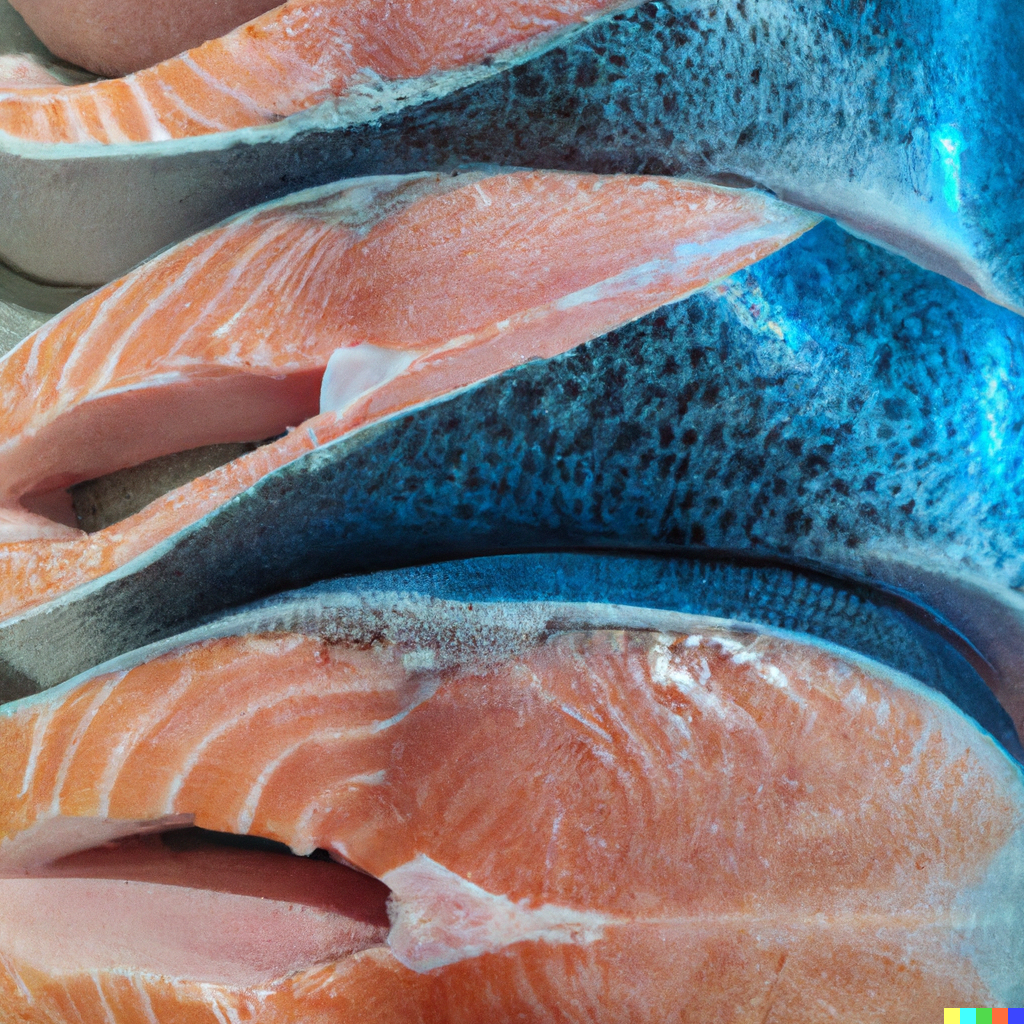Discoloration on food can be a bit concerning. When you find a grey or brown stripe on salmon fillet it is understandable that you might want to know what it is, and if it is safe to eat. In this article, we will address 3 different common types of discoloration you will find on salmon, explain what they each are, and if they are okay to eat.
Insulating Fat
The grey or brown strip that is found between the skin and the flesh of salmon is a layer of subcutaneous insulating fat.
This layer of subcutaneous fat is primarily composed of omega-3 fatty acids and acts as a natural insulation for the fish, helping it to maintain its body temperature in cold water

Is insulating fat it okay to eat?
The fat is 100% okay to eat. It has a stronger more fishy flavor than the meat itself does and so some people regard it as a delicacy. Omega-3 is considered a healthier fat so you could even argue this layer is the healthiest part of the salmon.
It is worth noting that the presence of this layer of fat can vary depending on the fish, and also the way it was raised. Wild fish tend to have a higher fat content than farm-raised ones.
Bruising
Marks like this one indicate bruising. Perhaps this salmon was likely the subject to some kind of impact or trauma, which resulted in the broken blood vessels that make up this ugly bruise. The bruise could have occurred before or after the salmon was killed. Even frozen salmon can bruise once it has been defrosted.
It is also possible that the salmon’s blood was not properly drained away, which can also lead to bruises. In any event, the result for this piece of salmon was that the blood vessels broke, blood oxidized and this part of the tail developed an unappealing spot.

Is bruised salmon okay to eat?
While the bruise may not be visually appealing, it is not harmful to consume. Cooking the salmon will kill potential bacteria and the U.S. Seafood Inspection Manual considers bruises to be “blemishes.” If aesthetics are of the utmost importance, you may choose to cut the bruise off. However, if you’re planning to top the salmon with a spice rub or smother it in sauce, the bruise may not be noticeable and can be cooked and consumed without issue.
The Bloodline
A reddish-brown strip that runs down the center of the fillet is called the bloodline. The bloodline is formed by a collection of blood vessels that run near the spine of the fish. The color comes from the myoglobin protein that carries oxygen through the fish’s blood.
Is the bloodline okay to eat?
The bloodline is considered by some to be undesirable due to it’s stronger, more fishy flavor and less desirable texture. For this reason, It is usually removed during the filleting process.
Having said that, it is perfectly edible and will do you no harm.
Conclusion
You now know the three most common types of discolorations that commonly occur in salmon. Next time you take out your salmon and notice one of these common marks you will know exactly what it is and whether you should eat it or not.
